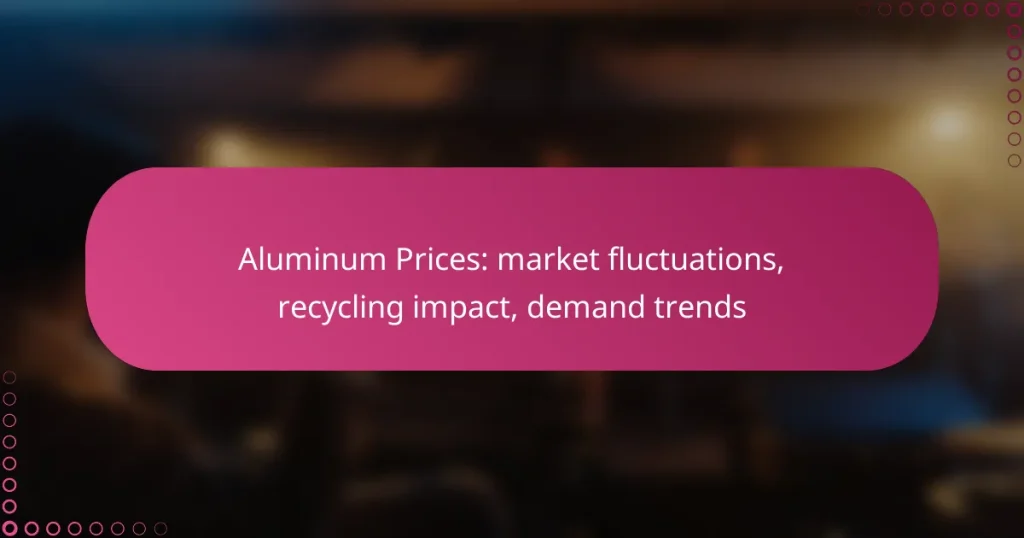When selecting metal types for projects, understanding the cost considerations is essential for effective budgeting and procurement. Factors such as raw material pricing, manufacturing processes, and market demand significantly influence the costs of metals like aluminum, steel, and copper. By analyzing these elements, businesses can make informed decisions that align with their financial goals and project requirements.
Tool Steel Pricing: heat treatment costs, alloy composition, market demand
Aluminum Prices: market fluctuations, recycling impact, demand trends
Cobalt Tools: cutting tools, wear-resistant applications, industrial machinery
Zinc Price Influences: mining costs, market demand, recycling impact
Titanium Pricing Factors: extraction costs, alloying elements, market demand
Carbon Steel Pricing: raw material costs, processing expenses, supply chain
Copper Market Value: global demand, mining costs, recycling rates
Brass Material Costs: copper prices, zinc availability, manufacturing processes
Inconel Components: gas turbines, chemical processing, aerospace
What are the cost factors for aluminum?
The cost of aluminum is influenced by several key factors, including raw material pricing, manufacturing processes, market demand, recycling impact, and geographic sourcing. Understanding these elements can help in making informed decisions regarding aluminum procurement and usage.
Raw material pricing
The price of aluminum is primarily driven by the cost of bauxite, the ore from which aluminum is extracted. Fluctuations in bauxite prices can significantly impact overall aluminum costs, as they account for a substantial portion of production expenses. Additionally, energy costs, particularly electricity, are critical since aluminum production is energy-intensive.
Manufacturing processes
Different manufacturing techniques, such as extrusion, casting, and rolling, can affect the overall cost of aluminum products. Each process has unique energy and labor requirements, which can lead to variations in pricing. For instance, extrusion may be more cost-effective for certain applications, while casting might be preferred for complex shapes.
Market demand fluctuations
Aluminum prices are sensitive to changes in market demand, which can be influenced by various industries, including automotive, construction, and packaging. When demand surges, prices typically rise, whereas a downturn can lead to lower costs. Monitoring industry trends can provide insights into potential price movements.
Recycling impact
Recycling plays a significant role in the aluminum market, as recycled aluminum requires only a fraction of the energy compared to primary production. The availability and efficiency of recycling programs can affect the supply and pricing of aluminum. Regions with robust recycling initiatives often see lower costs due to reduced reliance on raw materials.
Geographic sourcing
The geographic location of aluminum sourcing can influence costs due to transportation expenses and local market conditions. Regions with abundant bauxite reserves may offer lower prices, while those reliant on imports may face higher costs. Understanding local supply chains and logistics is essential for optimizing procurement strategies.
How does steel pricing compare?
Steel pricing is influenced by various factors, including production methods, global market trends, alloy variations, and transportation costs. Understanding these elements can help businesses make informed decisions about their material purchases and budget allocations.
Production methods
The production method significantly affects the cost of steel. Common methods include basic oxygen steelmaking and electric arc furnace processes, each with different energy requirements and material inputs. For instance, electric arc furnaces may have lower initial costs but can be more expensive in terms of energy consumption.
Additionally, the choice of raw materials, such as scrap metal versus iron ore, can impact pricing. Companies should evaluate their production methods to optimize costs while maintaining quality.
Global market trends
Steel prices are heavily influenced by global market trends, including supply and demand dynamics. Economic growth in countries like China can lead to increased demand, driving prices higher. Conversely, economic downturns may result in lower demand and reduced prices.
Monitoring global events, trade policies, and tariffs can provide insights into potential price fluctuations. Businesses should stay informed about these trends to anticipate changes in their steel procurement costs.
Alloy variations
Alloy variations can lead to significant differences in steel pricing. Specialty steels, such as stainless or high-strength low-alloy steels, typically cost more due to their enhanced properties and the complexity of their production. Understanding the specific requirements of a project can help determine whether a standard or alloyed steel is more cost-effective.
When selecting alloys, consider factors like corrosion resistance and strength-to-weight ratios, which can impact long-term performance and overall project costs.
Transportation costs
Transportation costs play a crucial role in the overall pricing of steel. These costs can vary based on distance, mode of transport, and current fuel prices. For instance, shipping steel over long distances by truck may incur higher costs compared to rail transport.
To manage transportation expenses, businesses should evaluate local suppliers and consider bulk purchasing options. Additionally, understanding regional logistics can help mitigate unexpected costs and ensure timely delivery of materials.
What are the costs associated with copper?
The costs associated with copper include mining and extraction expenses, benefits from its electrical conductivity, and the impact of market volatility. Understanding these factors is crucial for businesses and individuals considering copper for various applications.
Mining and extraction expenses
Mining and extraction of copper involve significant costs, including labor, equipment, and energy. These expenses can vary widely depending on the location of the mine and the method of extraction used, such as open-pit or underground mining.
For example, in regions like Chile or Peru, where large copper deposits are found, costs might be lower due to economies of scale. However, in less accessible areas, extraction costs can increase dramatically, impacting overall pricing.
Electrical conductivity benefits
Copper is renowned for its excellent electrical conductivity, which makes it a preferred choice for electrical wiring and components. This conductivity translates into efficiency and reliability, often justifying its higher initial costs compared to alternatives like aluminum.
Investing in copper wiring can lead to long-term savings on energy bills due to reduced resistance and heat loss. Therefore, while copper may have a higher upfront cost, its performance benefits can offset these expenses over time.
Market volatility
The price of copper is subject to significant market volatility, influenced by global demand, economic conditions, and geopolitical factors. Prices can fluctuate widely, sometimes by tens of percent within short periods, impacting budgeting for projects that rely on copper.
To mitigate risks associated with price changes, businesses often consider hedging strategies or long-term contracts. Staying informed about market trends and forecasts is essential for making cost-effective decisions regarding copper procurement.
How do metal types affect project budgeting?
The choice of metal types significantly influences project budgeting due to variations in material costs, availability, and performance characteristics. Understanding these factors helps in making informed decisions that align with financial constraints and project goals.
Material selection criteria
When selecting materials, consider factors such as strength, weight, corrosion resistance, and thermal conductivity. For example, aluminum is lightweight and resistant to corrosion, making it suitable for aerospace applications, while steel offers high strength and durability for structural projects.
Additionally, assess the availability of materials in your region, as local supply can impact costs. Metals like copper and stainless steel may be more expensive due to scarcity, whereas common metals like carbon steel may be more budget-friendly.
Lifecycle cost analysis
Lifecycle cost analysis involves evaluating the total cost of ownership of a metal type over its lifespan, including initial purchase, maintenance, and disposal costs. For instance, while stainless steel has a higher upfront cost, its durability and low maintenance needs may result in lower overall expenses.
Consider conducting a cost-benefit analysis that compares the initial costs against long-term savings. This approach helps in selecting a metal that not only fits the budget but also meets performance requirements over time.
What are the implications of metal recycling on costs?
Metal recycling significantly impacts costs by reducing the need for raw material extraction and processing, which can be expensive. The recycling process often leads to lower prices for recycled metals compared to newly mined materials, benefiting both manufacturers and consumers.
Recycled material pricing
The pricing of recycled metals varies based on market demand, quality, and type of metal. Generally, recycled aluminum and copper tend to have higher resale values due to their widespread use and demand in various industries. Prices can fluctuate, but recycled metals often sell for 50-80% of the cost of new materials.
For businesses, sourcing recycled metals can lead to significant cost savings. It’s advisable to stay updated on market trends and establish relationships with reliable suppliers to ensure competitive pricing.
Environmental regulations
Environmental regulations play a crucial role in metal recycling costs by imposing standards on waste management and emissions. Compliance with these regulations can lead to additional expenses for companies, but it also promotes sustainable practices that can enhance brand reputation.
In many regions, such as the European Union, strict regulations govern the recycling process, including the handling of hazardous materials. Companies should familiarize themselves with local laws to avoid fines and ensure efficient recycling operations.









